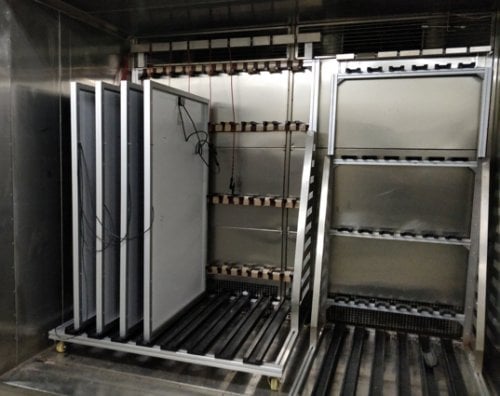Light Induced Degradation (LID) Testing for Solar Modules
Perform Light Induced Degradation (LID) Testing on solar modules at our Accredited PV Laboratory.
What is Light Induced Degradation (LID)?
Light Induced Degradation (LID) is a loss of performance of PV modules which happens in the very first hours of exposure to the sun. It mainly affects the real performance of installed modules with respect to name plate data delivered by some PV module providers.
Why is Light Induced Degradation (LID) testing for solar modules important?
Light-induced degradation (LID) is a known problem for silicon solar cells manufacturers (especially Poly PERC modules) and can lead to severe loss in generated power due to the formation of recombination active defects in the time of the excess carrier injection by forward biasing or illumination. That is why Light Induced Degradation (LID) testing is essential for solar modules.
Light Induced Degradation (LID) testing ensures the efficiency of PV modules during their complete lifetime. Thus, estimating Light Induced Degradation (LID) is an important task for simulations of yield and cost effectiveness of PV systems.
When is Light Induced Degradation (LID) testing performed?
LID test is already performed at an early stage of manufacturing by testing the solar cells. This is really important for the reliability and quality control during module production.
Different set ups are suitable for LID testing and often field conditions are simulated. The Two set ups are based on advanced LED techniques and electrical carrier injection. Both carrier injection set ups - by light or electrical current - lead to the same effect.
LID Standard test conditions and precautions
The LID stabilization test consists of a series of light exposure intervals of equal irradiance doses which are above 5kWh/ m2. The module performs at its maximum power point (MPP) during light exposure and a constant temperature is maintained around 50°C. The module is flashed after each interval. If the module power difference in the last three flashes is smaller than the threshold value defined by the standard, the stabilization is considered complete and the accumulated total irradiance dose required is measured. If not, the steps are repeated and the next interval of light exposure is applied. If the performance loss passes 5% after stabilization then the module failed the standard test.


